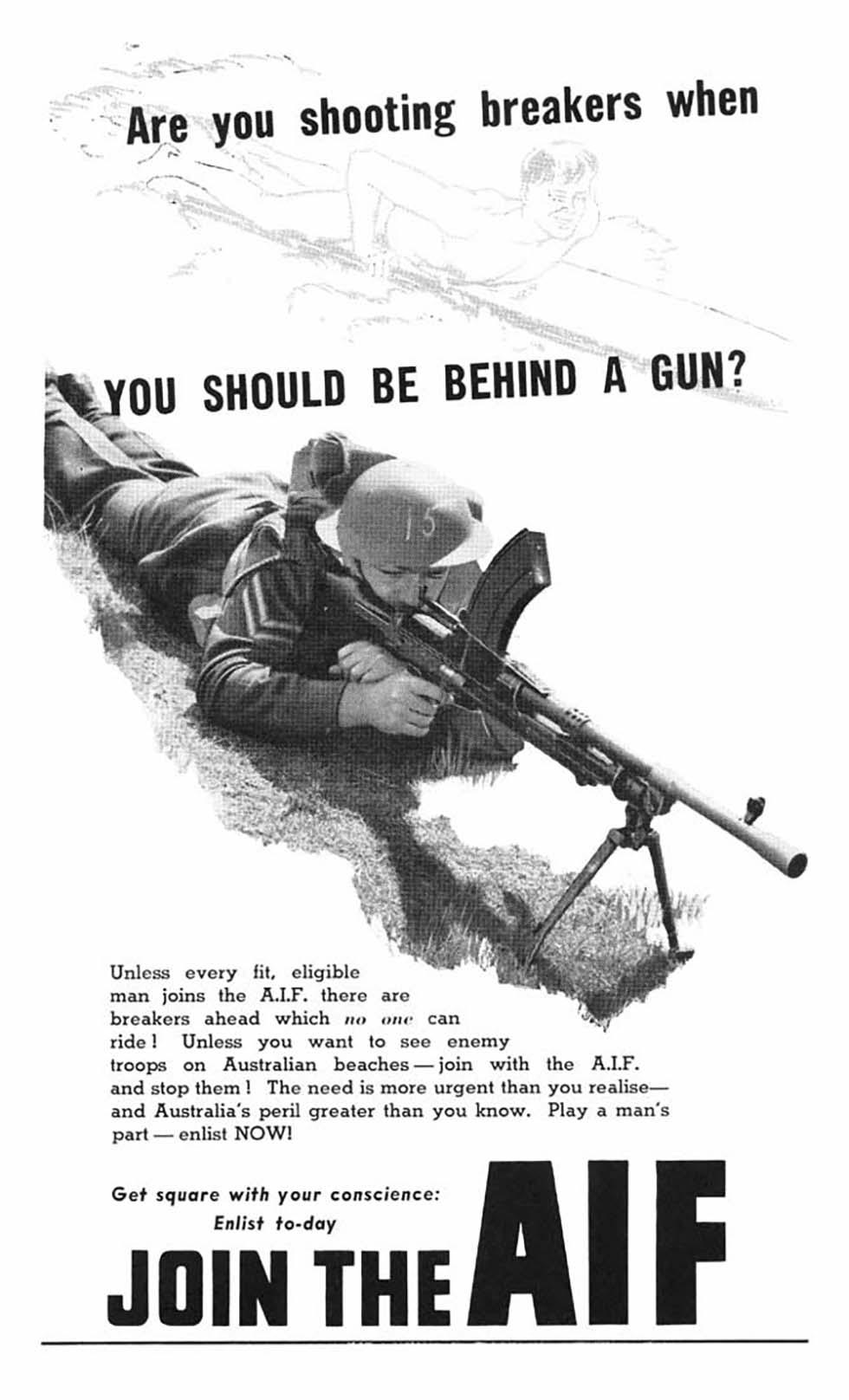
Recruitment poster for the Australian Imperial Force (AIF).
Aboriginal and Torres Strait Islander people should be aware that the National Archives' website and collection contain the names, images and voices of people who have died.
Some records include terms and views that are not appropriate today. They reflect the period in which they were created and are not the views of the National Archives.


Recruitment poster for the Australian Imperial Force (AIF).
Are you shooting breakers when
[Black and white drawing of a man lying on a surfboard]
YOU SHOULD BE BEHIND A GUN?
[Black and white photo of a man lying on grass with a sniper rifle]/
Unless every fit, eligible man joins the A.I.F. there are breakers ahead which no one [italicised] can ride! Unless you want to see enemy troops on Australia beaches—join with the A.I.F. and stop them! The need is more urgent than you realise—and Australia’s peril greater than you know. Play a man’s part—enlist NOW!
Get square with your conscience:
Enlist to-day
[Large bold text:] JOIN THE AIF
This is a black-and-white recruitment poster for the Australian Imperial Force captioned, 'Are you shooting breakers when YOU SHOULD BE BEHIND A GUN?'. The poster shows a photograph of a soldier lying on the ground shooting a Bren light machine gun. Behind him is a sketch of a man surfing in a similar pose. Text at the bottom of the image appeals to men to 'Get square with your conscience: Enlist to-day. JOIN THE AIF'.
Learning resource text © Education Services Australia Limited and the National Archives of Australia 2010.
Learn how to interpret primary sources, use our collection and more.
